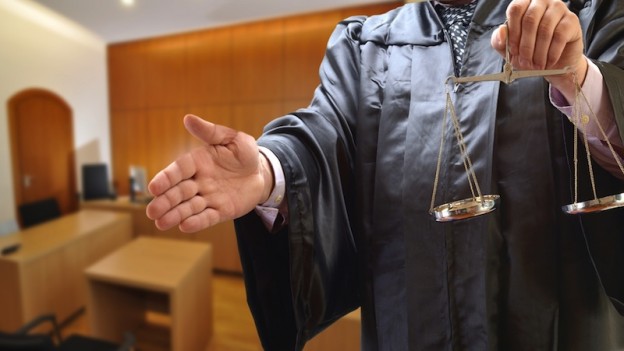The death of a child is always emotionally difficult for parents, relatives, and caretakers. Often, an allegation arises that the death resulted from the negligence or misconduct of the person responsible for the safety of the child. Determining the merit of such an allegation hinges on sifting out the emotion and focusing on facts: Did the school or agency have a duty to protect the child, were standards of care followed, were those standards breached, and did the breach result in a child’s death?
When the child is in school, a daycare program, or camp, the school or agency has a duty to protect the child by providing appropriate supervision. When there is an allegation that a school or agency breached that duty and a child died a wrongful death, a claim may ensue. This article will provide guidance for attorneys who are considering filing a wrongful death complaint or who must defend a school or agency against such a complaint.
To bring a successful wrongful death cause of action, all of the following elements must be present:
- The death of a human being
- Death caused by another’s negligence or intent to cause harm
- Survival of family members who suffer monetary losses as a result of the death
- The appointment of a personal representative for the decedent’s estate
For a school or agency to be found liable for the wrongful death of a child, the school or agency must have had a duty to care for the person who died and breached that duty, resulting in the child’s death. The death, in turn, must be shown to have caused injury or loss to others, such as surviving parents and siblings.
In the context of schools and other agencies, wrongful death claims can arise from any number of situations. Some examples include: a bus accident; a child falling from a cliff during a field trip or drowning in a swimming pool; a 300-pound, fold-up lunch table falling onto a child from a cafeteria wall; a student being shot and killed on school property by the school security guard; excessive discipline (e.g., putting a disruptive student to the floor and sitting on his back, resulting in suffocation); or administering the wrong medication. Unfortunately, these represent only a small sample on what might cause a death of a child.
Conditions for liability in a wrongful death case
A school or agency may be held liable for the wrongful death of a child in the same way that it may be held liable for the injury of a child. The conditions are the same — but the ultimate result is death, and damages are focused on survivors rather than the party who sustained the injury.
A plaintiff or defendant attorney should consider the following questions when considering the merit of filing a wrongful death complaint or mounting a defense of a complaint:
- Did the school or agency have a duty to protect the decedent in the particular situation?
- What was the reasonable standard of care to apply under the circumstances, and did the school or agency apply that standard?
- If there was a breach of this standard, was it a significant factor in causing the death?
- Were there intervening variables that may have prevented the proximate cause of injury or death?
- Did the child who died contribute to his or her own death through self-negligence?
Duty to protect
Those responsible for the safety of children have a duty to anticipate potential and foreseeable dangers and to take reasonable precautions to protect children from those dangers.
For activities that take place during the normal course of the program day, the duty to protect is usually easy to prove. Courts have held that this duty may apply beyond the grounds of the school or other agency, depending on the circumstance. For instance, the school or other agency may have a duty to protect children during a visit to a park from wandering into a busy highway.
Failure to exercise a reasonable standard of care
In the Houston Independent School District, construction was taking place on a junior high school campus. A tunnel linked the old and new portions of the building. A school policy required that a staff member be present at both ends of the tunnel to supervise students and to be aware of any behavioral issues that might lead to the harm of a student. This was determined to be an appropriate level of supervision.
A student in the tunnel died after he was attacked and struck in the head with a screwdriver. On the day of the attack, one teacher who was assigned supervisory duty called in sick and the school failed to replace him at the post. As the expert witness in this case, my opinion was that this was a failure to exercise the school’s own standard of care and the professional standard of care in the field.
If a supervisor does not take reasonable steps to protect a child from injury, that person and the employer can be found negligent. Courts will weigh the actions of the employee against how a reasonable employee in the same position would have acted in a similar circumstance.
For instance, would a reasonable supervisor tell children to cross a street to meet her at a park entrance when that entrance is across a busy highway without a crosswalk? More than likely, a court would deem it irresponsible for a supervisor to instruct children to meet her across the highway at a location that a reasonable supervisor would consider dangerous.
Proximate cause
If a child entered the roadway, was struck by a motor vehicle, and died, attorneys would need to determine all the facts. These may include intervening variables, like vehicle failure or road-design failure, to mount an effective strategy.
This illustrates another important question to consider: If the supervisor failed to exercise a reasonable standard of care, did this failure result in the child’s death?
The ability to prove this element depends on establishing that a child’s death could have been reasonably foreseen and prevented. If the death could have been anticipated and prevented by an employee through the exercise of a reasonable standard of care, legal causation may exist.
The question for the attorney to ask is whether the death of the child was a natural and probable result of the wrongful act and should have been foreseen by the supervisor in the context of the circumstances.
Revisiting the example above, it may be established that a reasonable child supervisor would have observed that vehicles were traveling at a potentially dangerous speed and that there was no crosswalk at the location where children were gathered. If the children were 5 or 6 years old, a reasonable supervisor would understand that they would not have the capacity to protect themselves from harm because of their age. A reasonable supervisor would consider that if she directed the children to cross the roadway at this location, it is foreseeable that a vehicle could strike a child. A jury could determine that the supervisor’s decision to instruct the children to cross the street was a deliberate action that placed the child in harm’s way and was the proximate cause of the child’s death.
A wrongful death claim will not be successful if the death could not have been prevented. If the supervisor in our example gathered the children together when they left the bus, escorted them to the corner, observed that there was a traffic light and crosswalk, instructed the children about the dangers of crossing the street and the precautions to take, and then instructed them to cross when she was sure the traffic stopped, the supervisor would have acted reasonably under the circumstances. Now, let’s suppose that a car failed to obey the stoplight, hitting and killing a child. In this situation, a jury may determine that the supervisor did everything possible to protect the child, and that a third-party act was the proximate cause of the child’s death. The unavoidability of the accident, in other words, nullifies proximate cause.
Contributory negligence
If it can be shown that a child contributed to his or her own death, the school or agency may invoke contributory negligence, a common defense against liability. If the court holds that contributory negligence was a factor in the child’s death, the school or agency may be held only partially liable or not liable at all, depending on the jurisdiction.
Take the case involving the drowning death of several students attending a leadership conference at a youth camp in Chicago. My review and analysis of the facts led me to conclude that the students, because of their age and capacity to understand the dangers, were able to guard their own safety but made decisions that inevitably lead to their death. Thus, the camp, in my opinion, was not responsible.
The students left their cabin after their supervisor was asleep, went down to a river that was clearly marked with warning signs, and placed several boats into the water. The boats began to sink, causing students to abandon the boats and drown. The school sponsored the event at the camp and as such had the responsibility to supervise the students during the day and at night, but did not place the appropriate number of supervisors in the cabin at night. Therefore, I concluded that the school and the students bore responsibility for their deaths.
Contributory negligence is difficult to prove among children between the ages of 7 and 14, unless it can be shown that a student is unusually intelligent and mature. In this case, the students were 17 and 18 years old and were selected from their peers to participate in this leadership-training program because of their intelligence and maturity.
Summary
Because these claims are emotional, it can be easy to jump to a conclusion. The plaintiff or defendant attorney should review potential negligence issues in a step-by-step manner to determine the merit of a claim or strength of a defense.
Duty to supervise, reasonable supervisory care consistent with the standard required in the field, breach of duty, and contributory negligence are factors that can present a roadmap to effective litigation. An expert witness can assist plaintiff and defendant attorneys with a thorough analysis of these issues.













